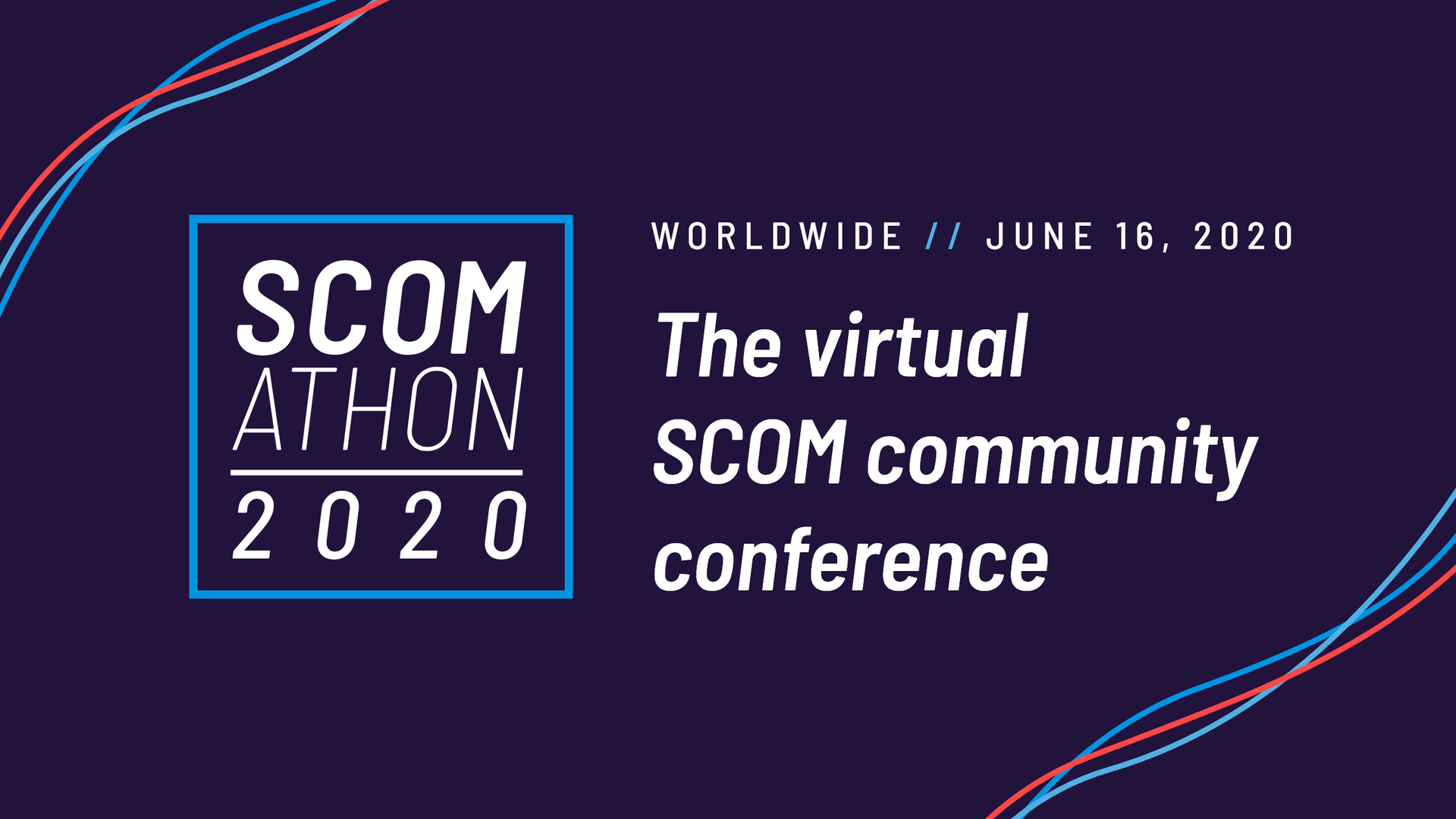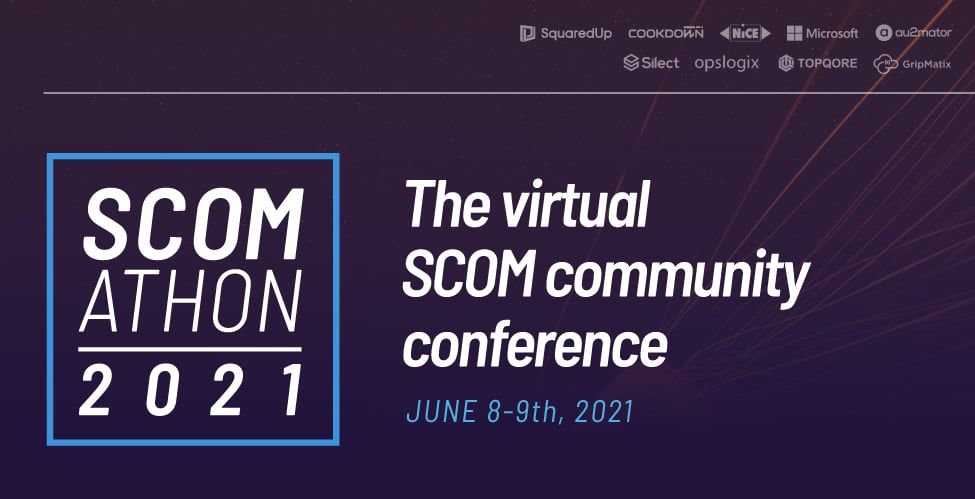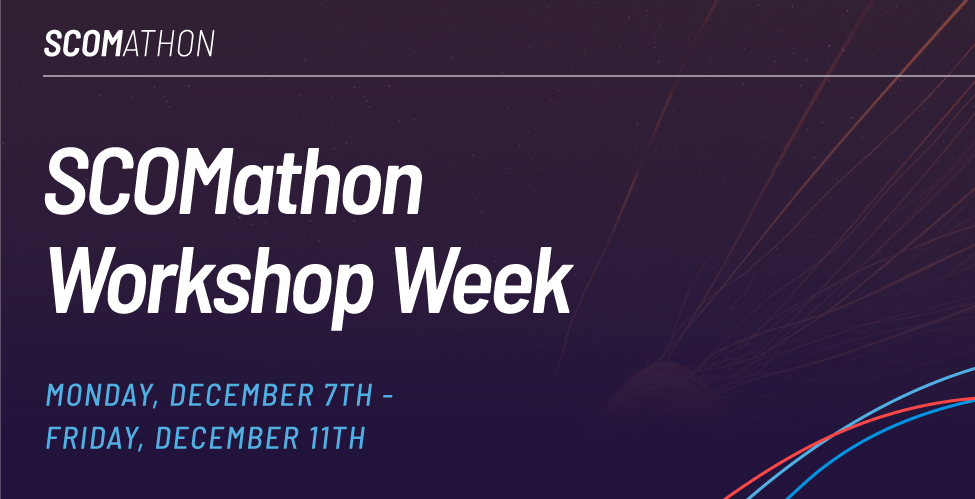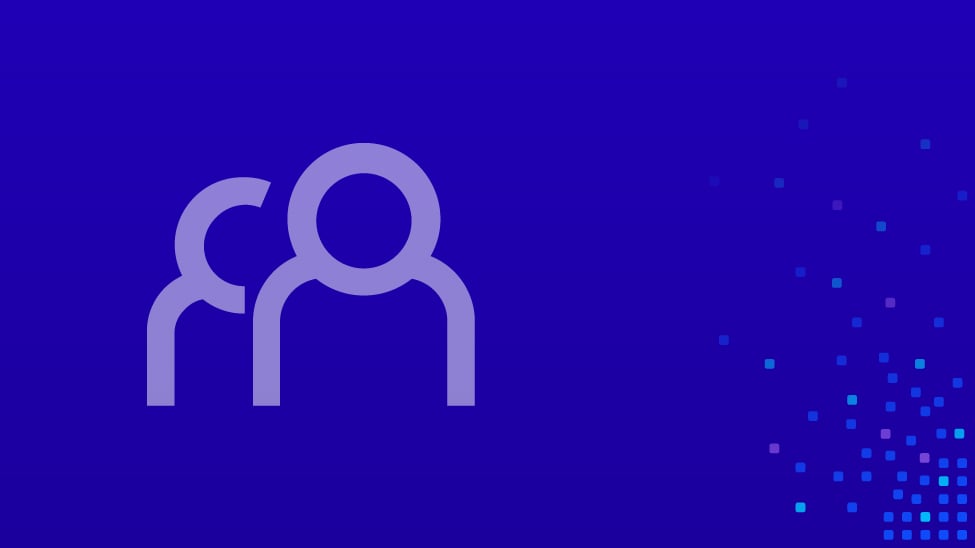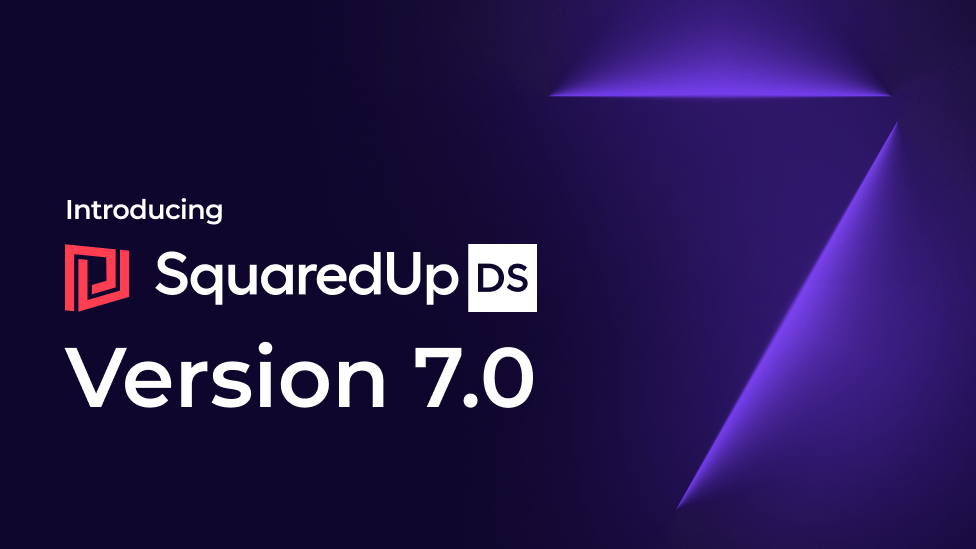
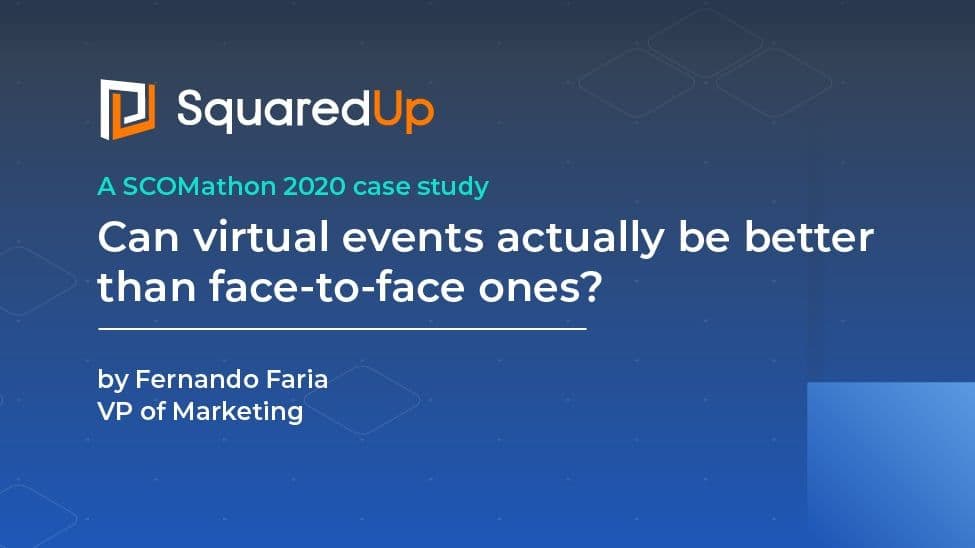
SCOMathon 2020
Can virtual events actually be better than face-to-face ones?

The short answer is “yes they can” but let me elaborate.
In 2009 I joined the team behind Mobile World Congress, an event brand that hosts over 100k attendees in Barcelona, 75k in Shanghai and 22k in Los Angeles.
I spent the next 9 years with the GSM Association, owner of Mobile World Congress, and Global Expansion Summit organizing over 50 large scale events across all 5 continents. These years helped me appreciate just how powerful it is to bring a community together under a common theme.
So when we set out here at SquaredUp to organise a virtual event targeting the SCOM community, I was excited to see how we could bring the same buzz and energy despite everyone being remote.
One very common aspect across all these events – and dozens more I’ve attended or sponsored since – was their emphasis on delivering outstanding networking experiences by convening like-minded people. It’s what keeps the community ticking and also what ultimately drives commercial success.
Networking with peers is at the top of the list of what attendees expect from an event, so the ability to bring people physically together has always been an industry imperative.
But then COVID-19 happened and forced the industry to rethink this equation, re-assessing what really makes an event successful.
So, what really makes a successful event?
In a nutshell, attendee experience.
A successful event is one that is considered a must-have by attendees.
Not speakers, not exhibitors, not sponsors or organizers. Attendees.
Whether you’re a speaker, sponsor or exhibitor, your efforts are aimed at wooing attendees.
A happy attendee will come back year after year, and so will everybody else. This is the equation.
Successful events are the ones that nail the audience, understand what they expect to get away from attending and then figure out the right channels to deliver it. Enter SCOMathon 2020.
The SCOMathon 2020 Case
SCOMathon 2020 was by all measures a huge success, with 99% of attendees saying they will attend the next edition in the post-event survey. Boom!
The event convened a community that sorely missed a voice and delivered exactly what they needed, the way they wanted.
Here are the 5 key reasons why SCOMathon was such a big hit:
- All the benefits of face-to-face events, but with lower costs and zero hassle
- A strong community united by a common cause
- Easy and valuable networking
- Intuitive format: The Zoom-Slack combo
- Doing well and doing good
Let’s look at each one of them in detail.
1. All the benefits of face-to-face events, but with lower costs and zero hassle
SCOMathon 2020 attendees got all the benefits from a face-to-face event, but with much lower costs and zero hassle.
This is what I mean by “all the benefits”:
- Live action as it happened – no pre-recorded sessions
- Easy, free and frictionless access to industry experts
- Constant and informal networking among peers
- Excellent content from different perspectives and geographies
- Facilitated and encouraged follow-up conversations with speakers
- Possibility – not obligation – to speak with sponsors and vendors
And this is what I mean by “no hassle”:
- They didn’t have to spend time and money on travel and accommodation.
- They didn’t have to walk – sometimes miles – between halls.
- They didn’t have to politely listen to sales pitches.
- They didn’t have to do anything they didn’t want to.
- Also, let’s face it. Not many people care about the things that makes up most of the work and costs of traditional events: venue, lighting, carpeting, soundproofing, health & safety, stage-setting, free food and beverages (this one is debatable, but you get my point).
At SCOMathon 2020 we designed the attendee experience to allow for maximum access to experts and interactivity among attendees throughout the day.
The speaking programme had a mix of high-profile SCOM experts bringing the best practices and updates with real customers bringing real-life issues.
Among the Zoom cafés we created, “Meet the Speaker” was the most popular. It was designed to replace those awkward minutes when a speaker is trying to leave the stage but can’t because there’s 20 people waiting to ask questions.
This mix not only offered our audience the perfect environment for transparent discussions, but also rallied everyone towards a common purpose: helping each other find the best solution for their particular needs.
In fact, one thing that really struck me during SCOMathon 2020 was the rather unique camaraderie I noticed among participants. There was no competition, no sales pitches, no agendas. It really felt like...a community.
2. A strong community united by a common cause
More than 1,400 people from over 50 countries registered to attend SCOMathon, a 16-hour virtual event.
Over 800 people actually attended live on the day (57% of those who registered). Some of them watched all the action live for every single one of the 981 minutes, going deep into their night/morning!
This, ladies & gentlemen, is what we call stickiness factor!
The single biggest reason for this incredible participation was the buzzing energy of a community that had been craving for a Force (note: Star Wars puns are 100% intended throughout this article) to gravitate towards.
And gravitate they did! SCOM veterans and newbies alike from all around the galaxy came together with so much energy and purpose that all 9 Slack channels (more on that shortly) were pulsating pretty much non-stop.
As I mentioned above, the camaraderie was remarkable and very energizing to me.
If you are part of the SCOM community this is old news but let me briefly explain to neutral readers why the community embraced SCOMathon 2020 so much.
SCOM is a well-established Microsoft monitoring tool for on-premise environments that helps IT teams keep all systems up and running, acting quickly when there’s outage, overload or any critical alert.
It has long been declared – even by Microsoft itself! - a dying piece of technology that would soon be completely replaced by Azure (Microsoft cloud).
Microsoft events barely cover SCOM anymore. There’s very limited PR budget and exciting announcements around SCOM are few and far between.
But since we announced SCOMathon 2020 we could sense the excitement bubbling in the community, just like this epic scene as The Resistance Prepared for the Battle of Exegol in Rise of Skywalker.
Registrations started flowing in at a pace that surprised even the most optimistic of our colleagues.
It became obvious to us that SCOM was in fact alive and well. We then realised that all #SCOManiacs around the world needed was a rallying point, and a space to connect with fellow SCOM lovers.
The lesson here is simple: give the community what it craves, and it will find you.
Now the challenge was to deliver value…. with unparalleled networking opportunities.
3. Easy and valuable networking
As discussed, the real value of networking is learning from peers and experts, not being on the receiving end of endless sales pitches (sorry exhibitors!).
Because SCOMathon 2020 was a virtual event, attendees had a much easier time reaching out to other people.
As Leon Laude, author of The System Center blog and SCOMathon 2020 speaker, noted on his post-SCOMathon blog“if I have to say one good thing about virtual events is that you have an easier time to reach out. In real-life I know that many face the challenge to reach out in public and ask questions, even if it’s only to one person, so this is a great opportunity for people to act anonymously and being able to reach out.”
This just doesn’t happen in traditional events. How many times have you been made to stand for minutes waiting for a break in conversation so you can have 2 minutes with someone?
As a global event, we organized SCOMathon 2020 content by topic and geography, with speakers dialling in from all around the world, from Australia to Dallas.
In between the sessions, we built in 10-minute breaks when attendees could engage with the previous speaker, join a thematic “café” or simply kick back and take their eyes off the screen for a bit.
But based on post-event feedback it’s clear our attendees really meant business. They wouldn’t let the opportunity to ask direct questions to a global expert slip away just so they could relax.
It was so intense! Some of our attendees were logged in for the entire 981 minutes the event was live. That’s over 16 hours! That’s commitment. That’s value.
But how did we make all this magic happen? Enter Zoom-Slack combo.
4. Intuitive format: The Zoom-Slack combo
OK this one is not really rocket science. Zoom and Slack are now mainstream tools that everyone in the industry uses pretty much every day.
The challenge - and somewhat the secret sauce - was finding the right cadence and mix between the two tools.
While the main event was one long 16-hour Zoom webinar, we also set up 5 thematic cafes, each one with their own Zoom link and moderators.
This format allowed us to include attendees and speakers from all around the world so we could tap on the expertise of people who might not normally be able to travel that easily to one place.
All communication was handled via Slack, where we operated 9 different channels. Over 4,000 messages were sent during the day!
Some industry experts like Kevin Holman for example, a Microsoft Premier Field Engineer whose blog is revered by thousands, did not speak at the main event, but joined us over Slack and provided real-time advice to end-users all over the world who were struggling with all sorts of issues.
Once again, Zoom-Slack helped us achieve a level of attendee experience that I just can’t see a face-to-face event delivering.
5. Doing well and doing good
Last but not least, a word on purpose and fighting the good fight.
SCOMathon 2020 pledged to donate $1 for each attendee that joined any of the 24 sessions.
Over $6,700 were raised and between the 3 sponsoring companies SquaredUp, NiCE and Cookdown the funds were donated to Doctors Without Borders to support COVID-19 Response efforts around the world.
At the end of each session we kept our attendees up to date on how much we were raising.
Closing the event at nearly 11pm UK time, SquaredUp CEO Richard Benwell – having delivered SCOMathon’s opening Keynote at 6am! – announced the final tally at the end of the event.
It was really cool seeing the reaction from some of the attendees in the #general Slack channel.
This sense of purpose and common cause tied in really well with the overall vibe of the event and audience profile, adding a really special touch to an amazing day.
So, can virtual events actually be better than face to face?
In conclusion, yes virtual events can definitely be a better fit for certain audiences.
I’m not entirely sure a C-level audience would embrace virtual events so enthusiastically, but SCOMathon 2020 was a great example of how to make the most out of all the tools we have available to deliver a great attendee experience virtually.
There is no doubt we will see a steady growth of virtual-only events in the future.
The right approach will always depend on the audience profile, needs and expectations and I think there will always be a market for face-to-face events, where tangible products are showcased, and live experiences deliver real value.
They might need to scale back and may never reach the scale they once had, not because of their virtual siblings, but because people will start re-assessing the costs and benefits of travelling to attend.
In the end, virtual events will not be the industry’s Death Star, but they may at last bring balance to the Force.
This will be, in my view, the lingering impact of COVID-19 in the events industry.
